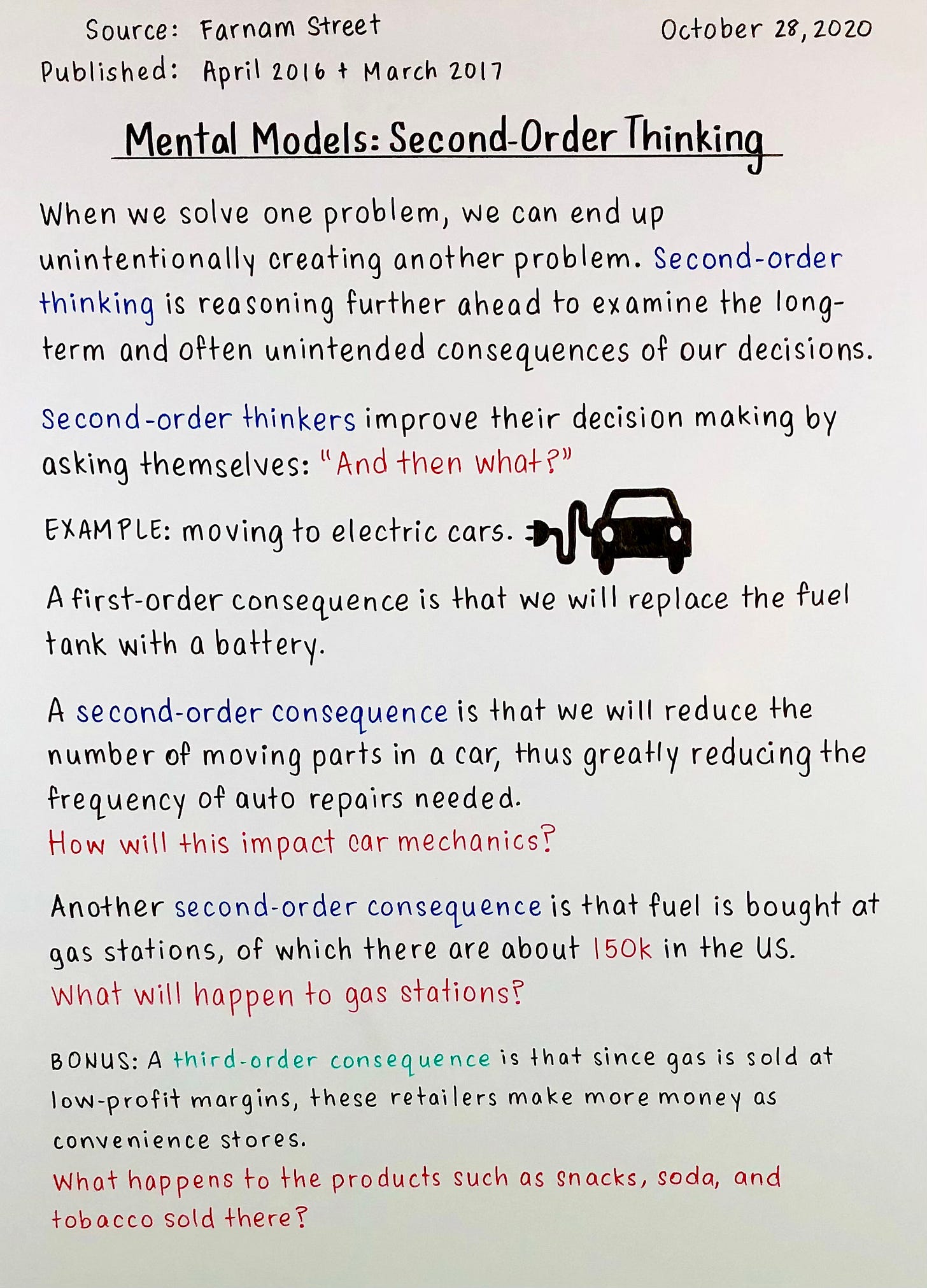Mental Models: Second-Order Thinking
Improve your decision making by asking yourself: “And then what?”

Source: Farnam Street and Benedict Evans
Published: April 2016 and March 2017
Mental Models: Second-Order Thinking
When we solve one problem, we can end up unintentionally creating another problem. Second-order thinking is reasoning further ahead to examine the long-term and often unintended consequences of our decisions.
Second-order thinkers improve their decision making by asking themselves: “And then what?”
Example: moving to electric cars
A first-order consequence is that we will replace the fuel tank with a battery.
A second-order consequence is that we will reduce the number of moving parts in a car, thus greatly reducing the frequency of auto repairs needed. How will this impact car mechanics?
Another second-order consequence is that fuel is bought at gas stations, of which there are about 150k in the USA. What will happen to gas stations?
Bonus: A third-order consequence is that since gas is sold at low-profit margins, these retailers make more money as convenience stores. What happens to the products such as snacks, soda, and tobacco sold there?
------------
Did you appreciate the fact today?

